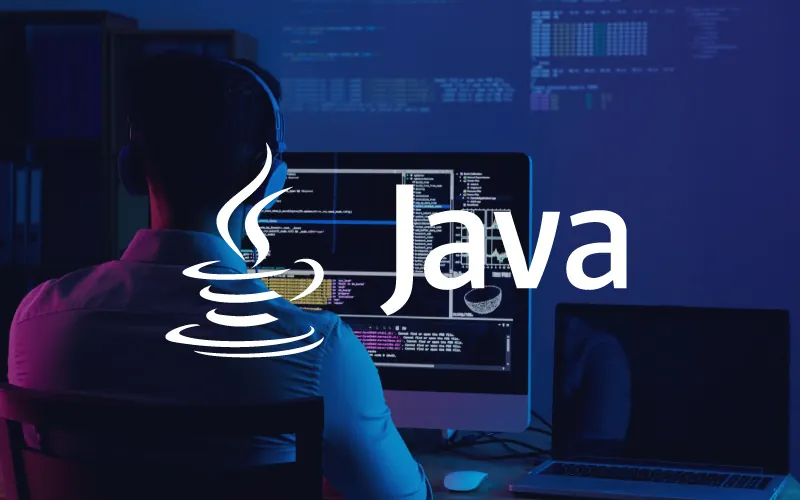1. Platform Independence
- Java achieves platform independence using the Java Virtual Machine (JVM). Once the source code is compiled into bytecode by the Java Compiler, it can run on any platform with a compatible JVM, making it Write Once, Run Anywhere (WORA).
2. Object-Oriented
- Java is built on the principles of Object-Oriented Programming (OOP):
- Encapsulation: Wrapping data and methods into a single unit (class).
- Inheritance: Reusing code by inheriting properties and methods from parent classes.
- Polymorphism: The ability of methods to take many forms.
- Abstraction: Hiding implementation details and showing only functionality.
3. Simple and Easy to Learn
- Java is designed to be easy to use and has a simple syntax that is similar to C and C++. It removes complex features like explicit pointers and operator overloading.
4. Secure
- Java provides security features like:
- Bytecode verification: Ensures that the code does not perform illegal operations.
- Security Manager: Allows the application to define access rules.
- No explicit pointers: Prevents direct memory manipulation.
5. Robust
- Java has strong memory management through the Garbage Collector, which automatically handles memory allocation and deallocation.
- The language has mechanisms to handle runtime errors using exception handling.
6. Multithreading
- Java supports multithreading, allowing multiple threads to run concurrently. This improves the performance of programs, especially in tasks like gaming, server applications, and GUI operations.
7. High Performance
- While Java is slower than compiled languages like C++, it achieves high performance through:
- Just-In-Time (JIT) Compiler: Converts bytecode to machine code at runtime for faster execution.
- Optimized libraries and efficient memory management.
8. Dynamic and Extensible
- Java is highly dynamic and can adapt to evolving environments:
- It supports dynamic loading of classes, which means classes can be loaded on demand at runtime.
- It is extensible with the integration of third-party libraries.
9. Distributed Computing
- Java has built-in support for networking and distributed computing through APIs like RMI (Remote Method Invocation) and CORBA. This makes it suitable for applications that run on distributed systems.
10. Portable
- Java eliminates dependency on system-specific features like file path structures or native libraries. This makes Java programs portable across different systems.
11. Rich API
- Java provides a comprehensive set of built-in libraries and APIs for:
- Data structures: Collections Framework.
- Networking:
java.netpackage. - Database access: JDBC (Java Database Connectivity).
- Multithreading:
java.util.concurrent.
12. Scalable
- Java is suitable for building large-scale applications due to its modularity and support for enterprise-grade frameworks like Spring, Hibernate, and Java EE.
Important Points to Know About Java
1. Java Virtual Machine (JVM)
- JVM is an abstract computing machine that enables Java bytecode to run on any device or operating system.
- Components of JVM:
- Class Loader
- Runtime Memory Areas (Heap, Stack, etc.)
- Execution Engine
2. Java Development Kit (JDK)
- JDK is a software development kit required to write and execute Java programs. It includes:
- Compiler (
javac) - JVM
- Standard libraries and tools (e.g., debugger).
- Compiler (
3. Java Runtime Environment (JRE)
- JRE is the runtime environment that allows Java applications to run. It includes the JVM and essential libraries but lacks development tools.
4. Garbage Collection
- Java uses automatic garbage collection to free up memory by removing objects that are no longer in use.
- Garbage collection happens automatically, but you can request it using
System.gc()(though it’s not guaranteed).
5. Popular Java Frameworks
- Spring: For enterprise and web applications.
- Hibernate: For Object-Relational Mapping (ORM).
- Apache Struts: For building Java web applications.
- JavaFX: For building rich GUI-based desktop applications.
6. Java Editions
- Java Standard Edition (Java SE): Core functionalities of Java.
- Java Enterprise Edition (Java EE): For building enterprise applications with web services and distributed architectures.
- Java Micro Edition (Java ME): For resource-constrained devices like embedded systems.
7. Backward Compatibility
- Java ensures backward compatibility, meaning older Java code runs on newer Java versions without modification.
8. Tools for Java Development
- Integrated Development Environments (IDEs): Eclipse, IntelliJ IDEA, NetBeans.
- Build Tools: Maven, Gradle.
- Testing Frameworks: JUnit, TestNG.
9. Real-World Applications of Java
- Enterprise Software: Java powers enterprise systems like banking, stock markets, and ERP systems.
- Android Development: It is the primary language for Android applications.
- Big Data: Used in Apache Hadoop and Apache Kafka.
- Scientific Applications: MATLAB and similar platforms.
10. Java Versions and Updates
- Oracle releases Java versions regularly. Some key versions include:
- Java 8 (introduced Lambda expressions).
- Java 11 (LTS version with performance improvements).
- Java 17 (current LTS version as of 2025).
- Java follows a six-month release cycle with long-term support (LTS) versions every few years.
Comparison of Java with Other Technologies
| Feature | Java | Python | C++ | C# |
|---|---|---|---|---|
| Ease of Learning | Medium | Easy | Hard | Medium |
| Performance | Medium (JVM overhead) | Slower (interpreted) | High (compiled) | Medium (optimized CLR) |
| Memory Management | Automatic (Garbage Collection) | Automatic | Manual | Automatic (GC) |
| Primary Use | Enterprise, Android, Web | Data Science, AI, Web | System Programming, Games | Desktop and Web (.NET) |
Summary
Java remains one of the most reliable and versatile programming languages, thanks to its platform independence, robust security, and extensive ecosystem. It’s an excellent choice for developers building cross-platform, enterprise-grade, and Android applications. While it may not always be the fastest or most concise, its strong community, backward compatibility, and broad applicability ensure its continued relevance in modern software development.


